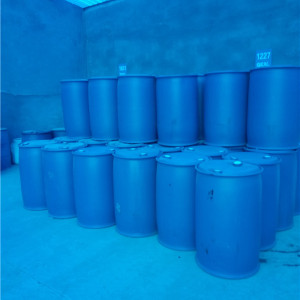
 Henan, China
Henan, China
 Henan, China
Henan, China
Send Email




Liquid Sodium Hydroxide / CAS 1310-73-2
OVERVIEW
Uses
- P-Cresol P-Cresol
- Sodium Gluconate Sodium Gluconate
- Cationic Starch Cationic Starch
- Sodium Methoxide Sodium Methoxide
- Glycine Betaine Glycine Betaine
- Tetrabutylurea Tetrabutylurea
- 1H-Imidazole, 2-(2-Chlorophenyl)-1-[2-(2-Chlorophenyl)-4,5-Diphenyl-2H- 1H-Imidazole, 2-(2-Chlorophenyl)-1-[2-(2-Chlorophenyl)-4,5-Diphenyl-2H-
- Sodium Chlorite Sodium Chlorite
- 4-Methylmorpholine 4-Methylmorpholine
- N-Methylmorpholine N-Oxide N-Methylmorpholine N-Oxide
- 1,4-Dioxane 1,4-Dioxane
- 4,4'-(1-Phenylethylidene) Biphenol 4,4'-(1-Phenylethylidene) Biphenol
- N-Hydroxyphthalimide N-Hydroxyphthalimide
- Sodium Propionate Sodium Propionate
- Sodium Acetate Sodium Acetate
- Sodium Dehydroacetate Sodium Dehydroacetate
- Sodium Benzoate Sodium Benzoate
- 2-Amino-5-Nitrophenol 2-Amino-5-Nitrophenol
- 3-Aminophenylacetylene 3-Aminophenylacetylene
- 4-Methoxybenzoic Acid 4-Methoxybenzoic Acid
- Sodium Pyroantimonate Sodium Pyroantimonate
- Sodium Formate Sodium Formate
- Atrazine Atrazine
- Sulfachloropyrazine Sodium Sulfachloropyrazine Sodium
- Sulfachlorpyridazine Sodium Sulfachlorpyridazine Sodium
- Sulfadimethoxine Sodium Salt Sulfadimethoxine Sodium Salt
- Sulfacetamide Sodium Sulfacetamide Sodium
- Benfotiamine Benfotiamine
- Clopidol Clopidol
- 3,5,6-Trichloropyridin-2-Ol Sodium 3,5,6-Trichloropyridin-2-Ol Sodium
- Hydroxypropyl Methyl Cellulose Hydroxypropyl Methyl Cellulose
- Phenoxyacetic acid Phenoxyacetic acid
- Sodium Lactate Sodium Lactate
- Crotonaldehyde Crotonaldehyde
- Disodium Phosphonomycin Disodium Phosphonomycin
- 2-Chloro-2-Ethoxyacetic acid Ethyl Ester 2-Chloro-2-Ethoxyacetic acid Ethyl Ester
- Bronopol Bronopol
- 2,2-Dibromo-2-Nitro Ethanol 2,2-Dibromo-2-Nitro Ethanol
- Sodium Bromide Sodium Bromide
- Sodium Bromate Sodium Bromate
- Trichlorocyanuric Acid Trichlorocyanuric Acid
- Simvastatin Simvastatin
- Levofloxacin Hemihydrate Levofloxacin Hemihydrate
- Mycophenolic Acid Mycophenolic Acid
- Dimercaptosuccinic Acid Dimercaptosuccinic Acid
- Repaglinide Repaglinide
- Molasses Molasses
- Erbium Oxide Erbium Oxide
- Sodium Oxalate Sodium Oxalate
- Hydroxypropyl Starch Hydroxypropyl Starch
- Starch Acetate Starch Acetate
- Sodium Carboxymethyl Cellulose Sodium Carboxymethyl Cellulose
- Sodium Carboxyl Methylstarch Sodium Carboxyl Methylstarch
- Levetiracetam Levetiracetam
- Triazamate Triazamate
- Sodium Dithionite Sodium Dithionite
- Pentaerythritol Pentaerythritol
- Eddha-Fena Eddha-Fena
- Salicylaldehyde Salicylaldehyde
- Copper Quinolate Copper Quinolate
- Jasmone Jasmone
- Calcium Stearate Calcium Stearate
- Magnesium Stearate Magnesium Stearate
- Sodium Stearate Sodium Stearate
- Lauric Acid Sodium Salt Lauric Acid Sodium Salt
- Lauric Acid Sodium Salt Lauric Acid Sodium Salt
- Octamethylcyclotetrasiloxane Octamethylcyclotetrasiloxane
- Trisodium Phosphate Trisodium Phosphate
- Trisodium Phosphate Trisodium Phosphate
- Trisodium Citrate Dihydrate Trisodium Citrate Dihydrate
- Cuprous Oxide Cuprous Oxide
- Ethylenediaminetetraacetic Acid Ethylenediaminetetraacetic Acid
- Glycine Glycine
- Iminodiacetic Acid Iminodiacetic Acid
- Direct Red 23 Direct Red 23
- Direct Red 227 Direct Red 227
- Cobalt Naphthenate Cobalt Naphthenate
- Phenylhydrazine Phenylhydrazine
- Chlorpyrifos Chlorpyrifos
- Hydroxyethyl Starch Hydroxyethyl Starch
- Zinc Thiazole Zinc Thiazole
- 1,3-Cyclohexanedione 1,3-Cyclohexanedione
- Nicotinamide Nicotinamide
- Hydroxypropyl Cellulose Hydroxypropyl Cellulose
- 2-Hydroxypropyl-β-Cyclodextrin 2-Hydroxypropyl-β-Cyclodextrin
- Captisol Captisol
- 1-Naphthol-4-Sulfonic Acid 1-Naphthol-4-Sulfonic Acid
- 1-Naphthol 1-Naphthol
- 1-Naphthol 1-Naphthol
- Sodium Molybdate Sodium Molybdate
- Sodium Metasilicate Sodium Metasilicate
- 2,3-Dichloroanisole 2,3-Dichloroanisole
- Sodium 2-Ethylhexanoate Sodium 2-Ethylhexanoate
- Ethyl 2-Methylbutyrate Ethyl 2-Methylbutyrate
- Nonyl Phenoxypolyethoxylethanol Nonyl Phenoxypolyethoxylethanol
- Zinc Hydroxide Zinc Hydroxide
- Pitavastatin Calcium Pitavastatin Calcium
- Bisphenol-A Epoxy Resin Bisphenol-A Epoxy Resin
- (E)-Dimethomorph (E)-Dimethomorph
- 2-Chloro-5-Chloromethylpyridine 2-Chloro-5-Chloromethylpyridine
- Bentazone Bentazone
- Cationic Polyacrylamide Cationic Polyacrylamide
- Sodium Lauroylsarcosinate Sodium Lauroylsarcosinate
- 4-[[4-(2-Propenyloxy)Phenyl]Sulfonyl]Phenol 4-[[4-(2-Propenyloxy)Phenyl]Sulfonyl]Phenol
- 1-Prop-2-Enoxy-4-(4-Prop-2-Enoxyphenyl)Sulfonylbenzene 1-Prop-2-Enoxy-4-(4-Prop-2-Enoxyphenyl)Sulfonylbenzene
- 2-Nitrophenyl-Beta-D-Galactopyranoside 2-Nitrophenyl-Beta-D-Galactopyranoside
- 4-Nitrophenyl-Beta-D-Galactopyranoside 4-Nitrophenyl-Beta-D-Galactopyranoside
- X-Gluc X-Gluc
- X-gal X-gal
- Benzoyl Peroxide Benzoyl Peroxide
- Carbon Dioxide Absorbent Carbon Dioxide Absorbent
- Sodium Hypophosphite Monohydrate Sodium Hypophosphite Monohydrate
- Barium Hydroxide Octahydrate Barium Hydroxide Octahydrate
- Loratadine Loratadine
- Cilostazol Cilostazol
- Adapalene Adapalene
- 2R Acid 2R Acid
- Sodium Butyrate Sodium Butyrate
- Sodium Gluconate Sodium Gluconate
- Sodium Naphthalene Sulfonate Formaldehyde Sodium Naphthalene Sulfonate Formaldehyde
- Sodium Salt Of Polynaphthalene Sulphonic Acid Sodium Salt Of Polynaphthalene Sulphonic Acid
- Salicylic Acid Salicylic Acid
- Sodium,(2S)-2-(Dodecanoylamino)-5-Hydroxy-5-Oxopentanoate Sodium,(2S)-2-(Dodecanoylamino)-5-Hydroxy-5-Oxopentanoate
- Sodium Lauroyl Methyl Taurate Sodium Lauroyl Methyl Taurate
- O-Anisidine O-Anisidine
- O-Phenetidine O-Phenetidine
- P-Anisidine P-Anisidine
- 4-Ethoxyaniline 4-Ethoxyaniline
- Tolytriazole Sodium Salt Tolytriazole Sodium Salt
- Iron Oxide Red Iron Oxide Red
- Iron Oxide Black Iron Oxide Black
- Iron Oxide Yellow Iron Oxide Yellow
- Sodium Hypochlorite Sodium Hypochlorite
- Silicon Oxide Silicon Oxide
- Sodium Polyacrylate Sodium Polyacrylate
- Polyoxirane-2,3-Dicarboxylic Acid Polyoxirane-2,3-Dicarboxylic Acid
- Poly-L-Aspartic Acid Poly-L-Aspartic Acid
- Ethylene Diamine Tetra(Methylene Phosphonic Acid)Sodium Ethylene Diamine Tetra(Methylene Phosphonic Acid)Sodium
- Diethylenetriamine Penta(Methylene Phosphonic Acid) Heptasaodium Salt Diethylenetriamine Penta(Methylene Phosphonic Acid) Heptasaodium Salt
- Diethylenetriamine Penta(Methylene Phosphonic Acid) Heptasaodium Salt Diethylenetriamine Penta(Methylene Phosphonic Acid) Heptasaodium Salt
- O-Methoxybenzaldehyde O-Methoxybenzaldehyde
- 3,5-Dihydroxybenzoic Acid 3,5-Dihydroxybenzoic Acid
- 3,5-Dihydroxybenzoic Acid 3,5-Dihydroxybenzoic Acid
- 3-Indoleformic Acid 3-Indoleformic Acid
- Copper Formate Copper Formate
- Ferric Oxide Ferric Oxide
- Sodium Cocoyl Glycinate Sodium Cocoyl Glycinate
- Cocoamidopropyl Betaine Cocoamidopropyl Betaine
- Sodium Perborate Monohydrate Sodium Perborate Monohydrate
Packaging
180 KG/Plastic Drum; 22000 KG/ISO Tank
Lead Time
14-30 days
REQUEST A QUOTATION
SubmitDESCRIPTION
Liquid Sodium Hydroxide
CAS:1310-73-2
Molecular formula: NaOH
Molecular weight: 39.99
Physicochemical properties: pure anhydrous sodium hydroxide is white, translucent and crystalline solid. It has strong corrosivity and water absorption and can be used as desiccant. However, it can not dry sulfur dioxide, carbon dioxide and hydrogen chloride gases. It is easy to deliquesce in the air, and sodium hydroxide is very soluble in water. The solubility increases with the increase of temperature. A lot of heat can be released during dissolution. At 288k, the concentration of saturated solution can reach 16.4mol/l (1:1). Its aqueous solution is astringent and greasy. The solution is strongly alkaline and has all the general properties of alkali. There are two kinds of commercial caustic soda: solid and liquid: pure solid caustic soda is white, block, flake, rod, granular and brittle; Pure liquid caustic soda is a colorless and transparent liquid. Sodium hydroxide is also soluble in ethanol and glycerol; But insoluble in ether, acetone and liquid ammonia. It has corrosive effect on fiber, skin, glass and ceramics, and will release heat when dissolved or diluted with concentrated solution; Neutralization reaction with inorganic acid can also produce a lot of heat and generate corresponding salts; React with metal aluminum and zinc, non-metallic boron and silicon to release hydrogen; Disproportionation reaction with halogen such as chlorine, bromine and iodine. It can precipitate metal ions from aqueous solution into hydroxide; It can saponify the oil and produce the sodium salt and alcohol of the corresponding organic acid, which is the principle of removing the oil on the fabric.
Product application: sodium hydroxide is widely used. In chemical experiments, in addition to being used as reagent, it can also be used as alkaline desiccant because of its strong hygroscopicity. Caustic soda is widely used in the national economy, and many industrial departments need caustic soda. The sectors that use caustic soda most are the manufacturing of chemicals, followed by papermaking, aluminum smelting, tungsten smelting, rayon, artificial cotton and soap manufacturing. In addition, in the production of dyes, plastics, pharmaceuticals and organic intermediates, the regeneration of old rubber, the electrolysis of metal sodium and water, and the production of inorganic salts, a large amount of caustic soda should also be used to prepare borax, chromium salt, manganate, phosphate, etc.
Typical Properties
Agrochemicals > Pesticide Adjuvants
GET SAMPLE
Submit- Overview
- Descriptions
- Sample





































